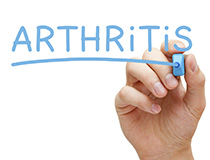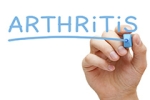
Around 52.5 million (22.7%) US adults suffer some form of arthritis.1 Osteoarthritis is the most common form of arthritis: 4.9% suffer from knee osteoarthritis and 9.7%, from hip osteoarthritis.2 Most conditions can be effectively managed without the need for any invasive intervention such as surgery. Non-surgical methods can be used for some forms of arthritis to control the symptoms.
Arthritis is a chronic degenerative disease that affects the joints of the body causing pain, stiffness and disability. Since the condition cannot be cured, treatment is aimed at relieving the symptoms and improving functioning. The first attempt at treatment is conservative methods. Below are a few common nonsurgical therapies that may be used in several different combinations to achieve the best results.
- Stem cell therapy: Stem cells are basic cells of the human body that have the unique ability to form new types of cells or self-renew. This amazing ability of stem cells has great potential in the field of medicine, especially orthopedic diseases such as arthritis.
The stem cells are first extracted from the bone marrow of the pelvic bone, processed, cultured and injected into the arthritic joint. The stem cells have the ability to migrate to regions of inflammation and injury to regenerate the damaged bone or cartilage tissues and also produce growth factors to enhance the process.
- Medications: Pain and inflammation can be controlled with different types of medications such as nonsteroidal anti-inflammatory drugs (NSAIDs), analgesics, counterirritant and corticosteroids. If these medications are not tolerated or pain persists, stronger narcotic pain relievers are prescribed. These can be prescribed in the form of oral tablets, creams and ointments, or injections.
While these help relieve symptoms, a class of drugs called disease-modifying anti-rheumatic drugs (DMARD) help slow-down joint damage.
- Viscosupplementation: The smooth movement of the joints of the body is facilitated by a natural lubricant called hyaluronic acid, which acts as a shock absorber during movement. With arthritis, this substance begins to diminish, causing painful movement.
One of the methods of relieving arthritic pain is by injecting hyaluronic acid into the joints to relieve pain in mild-to-moderate cases and improve mobility.
- Weight loss: Joints, especially the hips and knees, bear most of the body’s weight. An overweight body, on a compromised joint, can add to the damage. Losing weight, even small amounts, can play a major role in relieving symptoms and also slowing the progression of the disease.
- Exercise: Physical therapy is helpful in relieving symptoms in some forms of arthritis. Exercising not only helps in losing extra pounds, but also increases flexibility of the joints. High-intensity exercises such as jogging can cause more harm to your joints. Instead, low-impact exercises such as swimming, walking and cycling are easy on the joints. Studies show that any kind of moderate physical activity, thrice a week can greatly reduce the risk of disability among the elderly suffering from knee osteoarthritis.1
- Alternate medicine: Many alternate therapies such as acupuncture, massage, yoga or tai chi have been found to relieve pain, improve range of motion and flexibility in some forms of arthritis.
The type and severity of arthritis varies from one person to another, so your doctor will customize treatment according to your individual needs. Your doctor will work closely with you to design a treatment that is best suited to you.
References
- Arthritis-Related Statistics. Centers for Disease Control and Prevention website. http://www.cdc.gov/arthritis/data_statistics/arthritis-related-stats.htm. April 12, 2016. Accessed April 18, 2016.
- Murphy L, Helmick CG. The impact of osteoarthritis in the United States: a population-health perspective: A population-based review of the fourth most common cause of hospitalization in U.S. adults. Am J Nurs. 2012 Mar.112(3).S13-S19.
Dr. Domb is a nationally recognized orthopaedic surgeon specializing in sports medicine and arthroscopic surgery of the hip, shoulder and knee. A noted pioneer in advanced new techniques in hip arthroscopy, he delivers innovative treatments for patients with hip injuries such as impingement and labral tears. Dr. Domb is also an expert in arthroscopic surgery of the shoulder and knee, adept in specialized techniques including arthroscopic rotator cuff repair and all-inside ACL reconstruction.

